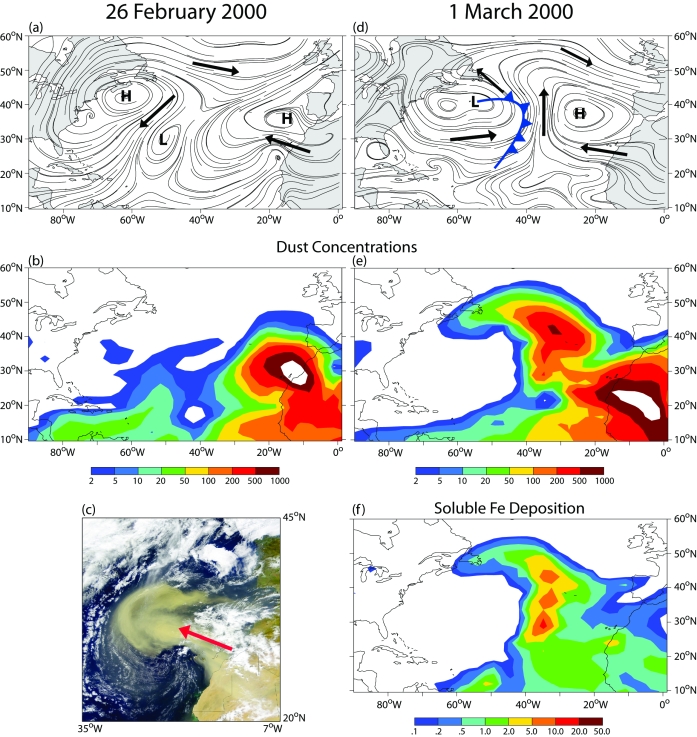Walter (Bud) Moxim
Research Meteorologist
Email: Bud.Moxim@noaa.gov
Phone: 609-452-6522
Fax: 609-987-5063
Research Interest:
The role of meteorology in tropospheric transport, deposition, and variability of atmospheric aerosols.
Current focus:
Biological productivity in vast regions of the world?s oceans is known to be limited by the supply of iron, an essential nutrient to marine organisms impacting the production of phytoplankton and eventual carbon export to the ocean floor. The atmospheric source of iron originates from mineral dust aerosols in the world deserts. We are using the GFDL Global Chemical Transport Model to examine the emission of mineral dust (~3.5% Fe) during desert wind storms; the chemical processing of iron to a soluble bio-available form during transport away from source regions; and the subsequent dry surface deposition and precipitation based column deposition to the ocean surface.

The figure shows that most of the North Atlantic Ocean receives its maximum supply of bio-available iron during summer when mineral dust from the Sahara desert is transported westward by the subtropical trade winds and then northward around the Azores high pressure system. In contrast, the northeast Atlantic maximum occurs during spring coincident with the observed spring phytoplankton bloom. During late winter and early spring the intermittent transport of Saharan dust northwestward into the Atlantic can interact with synoptic scale low pressure systems and produce large episodes of bio-available iron deposition.
The following figure depicts the complexity of this type of an event that occurred during late February and early March 2000.

On February 26 (a) a weak storm system is situated over the south-central Atlantic depicted by the L, while the Azores High indicated by the H is located off the northwest coast of Africa producing a strong east to west transport of dust from the Sahara over the Canary Islands into the Atlantic as simulated by the GFDL model (b) and observed by satellite (c). The low pressure system propagates north and strengthens, generating a strong cold front (thick blue line with triangles) and associated rainfall in the central Atlantic by March 1 (d). During this time dust has been transported anti-cyclonically around the Azores High (e) into the precipitation area east of the cold front producing substantial deposition of bio-available iron.


